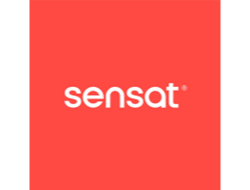How might we use geography and aerial imagery to identify and visualise the most probable next spill/pollution location?
Challenge
Innovative technologies to measure and monitor water quality in our watercourses have improved hugely over the last few years allowing us to understand what has already happened . . . a lagging indicator that helps us to trace/confirm the sources of pollution and spills. Our goal though is to predict, pre-empt and to avoid and prevent any pollutions and spills. Statistical modelling of sewerage networks has also helped but are there innovative new ways to identify probable sources of pollution with greater certainty? Are we leveraging the potential value of geospatial data? Is the answer staring us in the face but we cannot see it?
Proposal
The Geo-Sentinal sprint’s hypothesis is that by combining multiple layers of Geospatial data from GIS and geographic data from all forms of aerial imagery, hosting in a common visualisation environment and making this available in a browser, we can gain new insight on prioritising interventions. By looking at what has been there all along, but perhaps hidden when looking at close quarters, we may see patterns that lead us to new conclusions.
We’ll source drone and/or aerial imagery of two of our most problematic areas, Cofferston and Allendale prior to the Festival. In the session we will look at other problems where this approach seems to be working, such as fly tipping, to trigger new thinking and to explore how transferrable the approach is to identification of probable pollution sources and locations. We’ll assess which datasets and forms of imagery are the most valuable, reliable and useful to guide future applications of the approach. If successful, then we will take this approach and applying it to the next most problematic, and perhaps less understood areas. You’d be able to ask “can you see XYZ assets and certain geographical features?”
A parallel sprint, sponsored by GHD, is looking at the effectiveness and value of interventions so there will be opportunities to exchange insights between the two sprints. Imagine, having identified the priority target interventions . . . to be able to then assess the impact and value!
Target Objectives
- To test and prove the hypothesis on problematic areas
- To apply what we learn to new areas
- To discover which datasets are most valuable in leading us to probable spills and pollutions
- To identify 5 locations where the most effective interventions can be made
Target Audience
Wastewater networks professionals, Sewerage Operations Managers, Sewerage Technical Support teams, Sewerage Network performance professionals.
| Registration has now closed |

